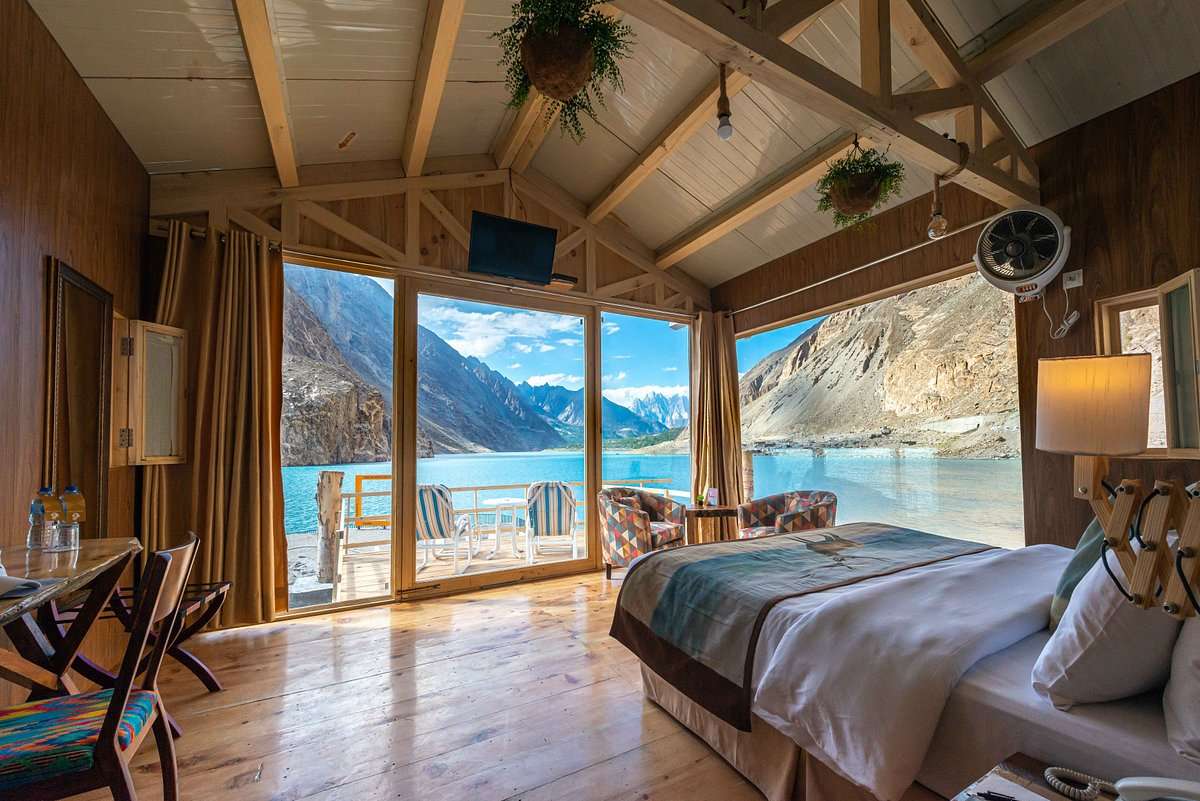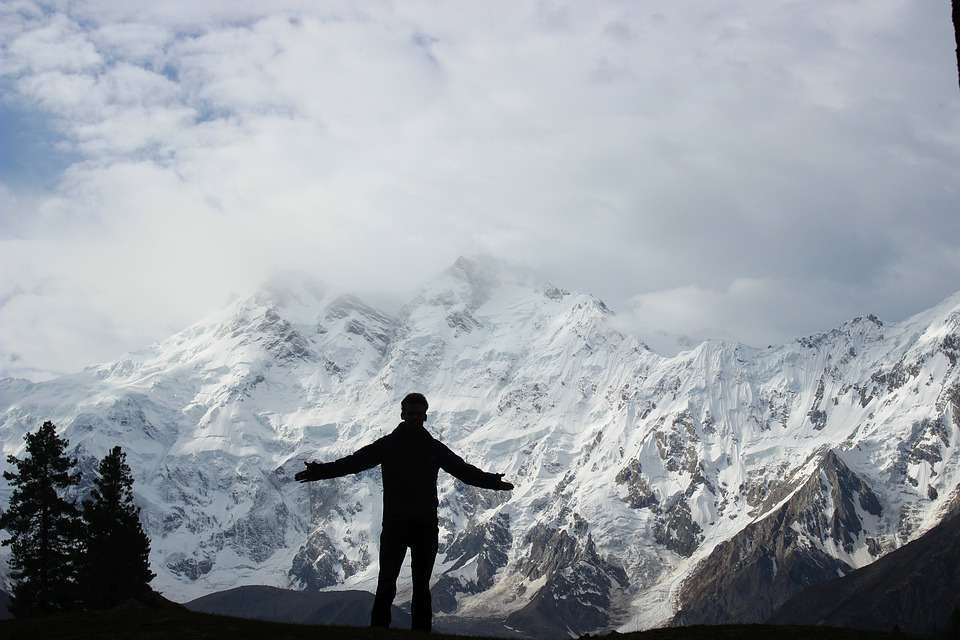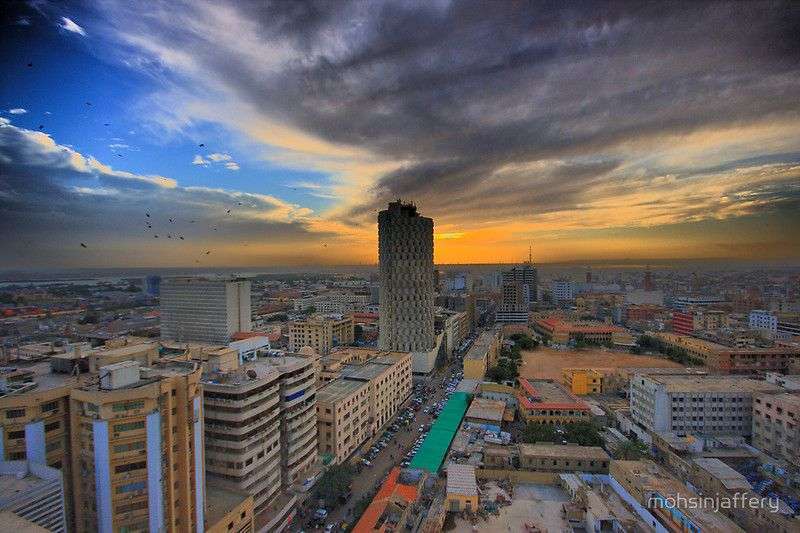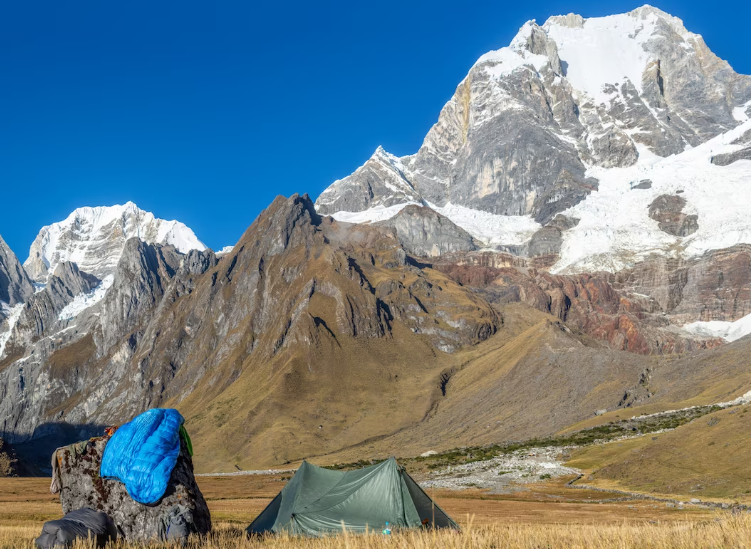Immersed within the embrace of majestic mountains and unspoiled landscapes, Gilgit-Baltistan emerges as a realm of incomparable beauty and cultural opulence. This secluded corner of Pakistan unfolds a trove of renowned destinations that encapsulate the very spirit of its untamed beauty and dynamic heritage. Accompany us on a captivating expedition as we journey through a selection of Gilgit-Baltistan’s most celebrated sites, each presenting a living testament to the region’s irresistible charm. Are you looking for the most famous places in Gilgit-Baltistan in 2023?
1. Hunza Valley – Crown Jewel of the North

We start our journey in the ethereal Hunza Valley, frequently referred to as the “Crown Jewel of the North.” This valley, which is encircled by the impressive Karakoram Range, is a medley of lush meadows, beautiful rivers, and quaint villages. Just two examples of the wonders that await in this gorgeous location are the famous Baltit Fort and the tranquil Attabad Lake.
Spectacular Scenery:
Hunza Valley is a symphony of breathtaking vistas that come together to create a visual spectacle. The valley is cocooned by the towering peaks of the Karakoram Range, including some of the world’s highest mountains. These majestic sentinels stand guard over the valley, their snow-capped summits contrasting with the lush greenery of the surroundings. Amid this picturesque canvas, terraced fields, vibrant wildflowers, and meandering rivers add layers of charm.
Cultural Heritage:
The Hunza Valley is renowned for its beautiful beauty as well as its extensive cultural history. The neighborhood’s Burusho-dominated community is renowned for its friendliness, generosity, and upholding of long-standing customs. The valley is filled with quaint towns that each exhibit a unique fusion of the old and new. A distinctive tapestry of architectural aesthetics is produced by the harmony between traditional timber buildings with elaborate balconies and contemporary influences.
Karimabad – A Gem Within:
The beating heart of the valley lies Karimabad, the capital of Hunza. This charming village serves as a starting point for a wide range of adventures. The famous Baltit Fort, a reminder of the area’s rich history, stands incestuously as a representation of Hunza’s past. The similarly fascinating Altit Fort provides information on the valley’s cultural development. Karimabad’s winding lanes are home to little marketplaces where one may find handicrafts, precious stones, and organic food.
Attabad Lake – Nature’s Miracle:
A visit to the Hunza Valley is incomplete without beholding the splendor of Attabad Lake. Formed in 2010 due to a natural disaster, this turquoise gem is a sight to behold. Surrounded by rocky cliffs and mountains, the lake’s tranquil waters mirror the surrounding landscape, creating a mesmerizing tableau. Visitors can traverse the lake by boat, witnessing the ethereal beauty from a unique perspective.
Cultural Festivals and Traditions:
Festivals that highlight Hunza Valley’s heritage bring the region to life. The yearly “Shandur Polo Festival” is a highlight, with classic polo matches taking place against the picturesque Shandur Pass as a backdrop. Travelers are encouraged to participate in and immerse themselves in the region’s culture through local music, dance, and traditional sports, which provide a look into the area’s cultural life.
2. Naltar Valley – Palette of Colors

Tucked away within the embrace of the Karakoram Range, Naltar Valley stands as a breathtaking masterpiece of nature’s artistry, earning its reputation as a “Palette of Colors.” This enchanting valley, nestled within the Gilgit-Baltistan region of Pakistan, offers a kaleidoscope of landscapes that range from vivid lakes to lush meadows, making it a must-visit destination for nature enthusiasts and adventure seekers alike.
Spectacular Lakes:
Naltar Valley is renowned for its pristine lakes, each possessing its unique hue and charm. The strikingly blue Naltar Lake captivates with its deep azure waters, mirroring the sky above. Saturated with vibrant shades, the Satrangi Lake—named for its seven distinct colors—transforms like a shifting canvas, creating an almost magical visual spectacle that seems straight out of a fairy tale.
Lush Alpine Meadows:
Naltar Valley becomes a carpet of beautiful alpine meadows covered with a colorful assortment of wildflowers when the snow melts. The valley is painted in vivid hues in the summer when the environment comes to life with the bloom of diverse flora. These meadows are a refuge for trekkers and hikers, offering a tranquil setting for strolls and energizing excursions.
Skiing and Adventure Hub:
Naltar Valley also beckons adventure enthusiasts with its world-class skiing opportunities. The valley boasts well-maintained ski slopes that attract skiing enthusiasts from around the globe. With its unique combination of pristine snow and stunning scenery, Naltar has become a hotspot for winter sports, hosting ski competitions that showcase the region’s allure and potential.
Cultural Exploration:
The valley in Naltar is home to a thriving local culture in addition to the natural beauty that commands attention. The valley’s indigenous inhabitants have managed to preserve their way of life, and they frequently provide a friendly welcome to guests. Interacting with the locals offers a peek into the traditions, rituals, and everyday routines that have endured through the ages.
Accessibility and Sustainability:
Naltar Valley’s remote location has contributed to its preservation, as it has remained relatively untouched by mass tourism. However, this remoteness also presents challenges in terms of accessibility and infrastructure. Efforts are being made to improve road networks and facilities while maintaining a delicate balance between sustainable tourism and preserving the valley’s pristine environment.
Photographer’s Paradise:
A photographer’s paradise, Naltar Valley is known for its beautiful panoramas and ever-changing settings. The mix of hues, textures, and natural components provides countless chances to take breathtaking pictures that perfectly capture the ethereal splendor of the valley.
3. Skardu – Gateway to Adventure

Skardu, the gateway to many of Gilgit-Baltistan’s wonders, boasts a roster of famous places. From the serenity of Shangrila Resort and the historical grandeur of Skardu Fort to the tranquil allure of Satpara Lake and the cultural legacy of Shigar Valley, Skardu presents a myriad of experiences that captivate the soul.
Spectacular Landscapes:
Skardu’s natural splendor is breathtaking. The town is encircled by a canvas of snow-capped mountains, gleaming glaciers, and verdant valleys, and is framed by the towering peaks of the Karakoram and Himalayan ranges. Visitors are left speechless by the breathtaking view created by the meeting point of the Shigar River and the massive Indus River.
Adventure Awaits:
Skardu is a playground for adventurers. From trekking to mountaineering, the town offers a range of thrilling activities that cater to all levels of expertise. The world-renowned trek to K2 Base Camp originates from here, attracting mountaineers from across the globe. Other treks, like the Baltoro Glacier trek, offer unparalleled vistas and a chance to connect with nature in its purest form.
Cultural Riches:
Skardu’s cultural diversity is as captivating as its landscapes. The town is home to diverse ethnicities, including Balti and Tibetan communities. Engaging with the locals allows travelers to experience their unique traditions, crafts, and hospitality.
4. Deosai National Park – The Land of Giants

We travel to the fascinating Deosai National Park, often known as the “Land of Giants.” of the summer, the vast meadows of this high-altitude wilderness are covered with wildflowers and are home to a variety of species. Wildlife enthusiasts go to this pristine habitat in particular to see the elusive Himalayan Brown Bear.
A Unique Alpine Wilderness:
Deosai National Park, spanning over 3,000 square kilometers, is a unique alpine wilderness that lies at an elevation ranging from 3,500 to 5,000 meters above sea level. This vast expanse of undulating meadows, bordered by snow-capped peaks and pristine lakes, creates an otherworldly panorama that’s unparalleled in its beauty.
Summer Splendor:
During the summer months, Deosai undergoes a remarkable transformation. The meadows, often covered in a thick blanket of snow during the colder seasons, burst forth with a vibrant array of wildflowers. The landscape becomes a riot of colors as various species of primroses, blue poppies, and buttercups paint the terrain with hues rarely seen in such high-altitude regions.
Wildlife Haven:
One of the park’s most remarkable features is its diverse and often elusive wildlife. Deosai is home to the Himalayan brown bear, a species that has become emblematic of the region. This majestic creature, now critically endangered, finds refuge within the park’s boundaries. Other wildlife, including ibex, red foxes, golden marmots, and snow leopards, contributes to the park’s ecological diversity.
Avian Paradise:
Deosai also serves as a paradise for bird enthusiasts. The park hosts a range of avian species, including the Himalayan griffon vulture, golden eagle, and peregrine falcon. The sprawling meadows provide an ideal feeding ground for these majestic birds of prey.
Conservation Efforts:
Recognizing its ecological significance, authorities declared Deosai a national park in 1993. They designated the park to preserve its unique ecosystems, protect its flora and fauna, and promote sustainable tourism. Conservation initiatives have helped raise awareness about the fragility of the region’s ecosystems and the need to ensure the survival of its iconic wildlife.
Access and Experience:
An experience in and of itself is getting to Deosai. The voyage entails navigating difficult terrain and frequently needs the knowledge of local guides. Skardu, a village that serves as the beginning point for those who want to explore this alpine splendor, is the park’s entrance. Tourists cannot recall any other experience that equals the memory of camping under the starry skies and embracing nature.
5. Khunjerab Pass – Roof of the World
As we ascend to new heights, we reach the iconic Khunjerab Pass, the highest international border crossing in the world. On the China-Pakistan border, this pass offers stunning mountain views and a cross-cultural exchange experience. The highest international border crossing in the world is located at the Khunjerab Pass, a crucial section of the historic Silk Road. It connects the Gilgit-Baltistan region of Pakistan with the Xinjiang province of China, serving for centuries as a vital commercial and transportation route. Because of its elevated altitude, the towering peaks of the Karakoram Range encircle it, offering awe-inspiring views of the nearby alpine landscapes, as well as the snow-covered mountains, glaciers, and summits.
Transcending Borders:
As a hub for trade, diplomacy, and cultural exchange, the past is of utmost historical and geopolitical significance. In addition to facilitating trade between Pakistan and China, it also serves as a symbol of their close ties and regard for one another. The Khunjerab Pass serves as a testament to the value of teamwork by bridging political divides and showing the possibilities for peaceful coexistence on a global scale.
Environmental Diversity:
Despite its high altitude and challenging terrain, the Khunjerab Pass boasts a surprising range of biodiversity. The nearby regions host diverse wildlife, including snow leopards, Marco Polo sheep, ibex, and numerous bird species. The diverse ecosystem stands as a testament to nature’s resilience, adapting to the harsh conditions at this extreme elevation.
Cross-Cultural Interaction:
Travelers passing between Pakistan and China can see a rare fusion of cultures at the Khunjerab Pass. In the past, visitors had the opportunity to interact with customs officers from both nations at the border crossing, allowing them to observe interactions at this critical intersection firsthand. It promotes understanding between cultures by serving as a tangible illustration of the relationships that unite people and nations.
Visitor Experience:
For intrepid adventurers and wanderers, the Khunjerab Pass presents an unforgettable experience. Traveling through the Karakoram Highway, one can feel the gradual ascent as the landscapes transform from lush valleys to stark alpine terrain.
Frequently Ask Questions About Famous Places in Gilgit-Baltistan
1. What is famous about Gilgit Baltistan?
Gilgit-Baltistan is a region located in the northern part of Pakistan, known for its breathtaking natural beauty, unique cultural heritage, and historical significance.
2. Which is the most famous district in Gilgit Baltistan?
While all districts in Gilgit-Baltistan possess their unique charm and significance, many people often consider Hunza District as one of the most famous and well-known districts in the region. Hunza’s reputation stems from its stunning landscapes, rich culture, and historical importance.
3. What is the beauty of Gilgit city?
Gilgit City, the administrative capital of Gilgit-Baltistan, possesses its unique charm and beauty. Gilgit city’s beauty: Majestic mountains, river confluence, bustling bazaars, diverse culture, history, architecture, hospitality, adventure, and local cuisine.
4. What is Gilgit’s Famous Food?
Its unique and flavorful cuisine reflects the cultural diversity and natural resources of the region, making Gilgit renowned. Some of the famous foods of Gilgit include Chapshuro, Gyal, Harissa, Seekh Kebabs, and Yak Meat Dishes.
5. Which Fort is Famous In Gilgit Baltistan?
One of the most famous forts in Gilgit-Baltistan is the “Baltit Fort,” located in the Hunza Valley. The Baltit Fort is an iconic historical structure that holds significant cultural and architectural importance.



